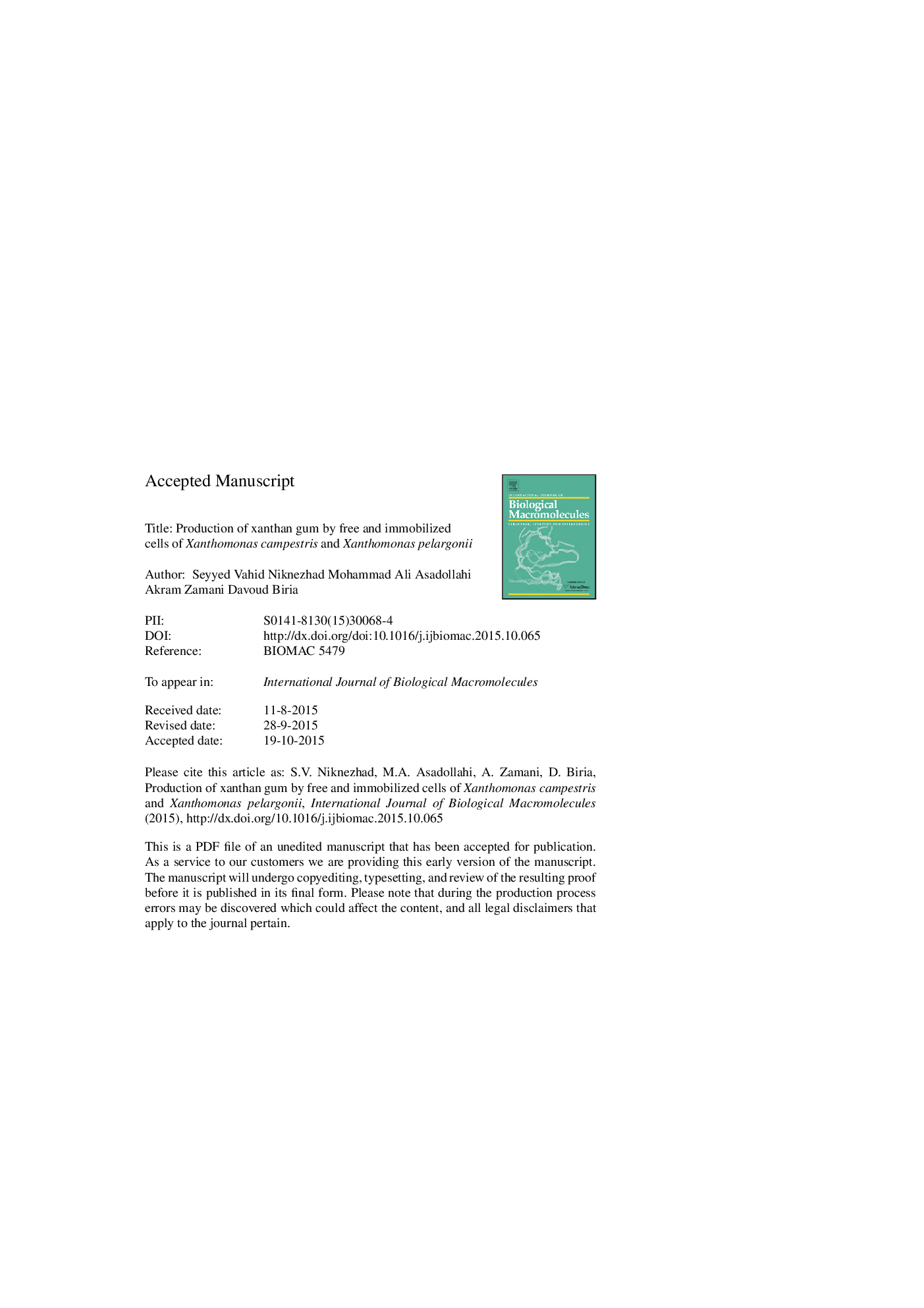| Article ID | Journal | Published Year | Pages | File Type |
|---|---|---|---|---|
| 8330328 | International Journal of Biological Macromolecules | 2016 | 29 Pages |
Abstract
Production of xanthan gum using immobilized cells of Xanthomonas campestris and Xanthomonas pelargonii grown on glucose or hydrolyzed starch as carbon sources was investigated. Calcium alginate (CA) and calcium alginate-polyvinyl alcohol-boric acid (CA-PVA) beads were used for the immobilization of cells. Xanthan titers of 8.2 and 9.2Â g/L were obtained for X. campestris cells immobilized in CA-PVA beads using glucose and hydrolyzed starch, respectively, whereas those for X. pelargonii were 8 and 7.9Â g/L, respectively. Immobilized cells in CA-PVA beads were successfully employed in three consecutive cycles for xanthan production without any noticeable degradation of the beads whereas the CA beads were broken after the first cycle. The results of this study suggested that immobilized cells are advantageous over the free cells for xanthan production. Also it was shown that the cells immobilized in CA-PVA beads are more efficient than cells immobilized in CA beads for xanthan production.
Keywords
Related Topics
Life Sciences
Biochemistry, Genetics and Molecular Biology
Biochemistry
Authors
Seyyed Vahid Niknezhad, Mohammad Ali Asadollahi, Akram Zamani, Davoud Biria,
